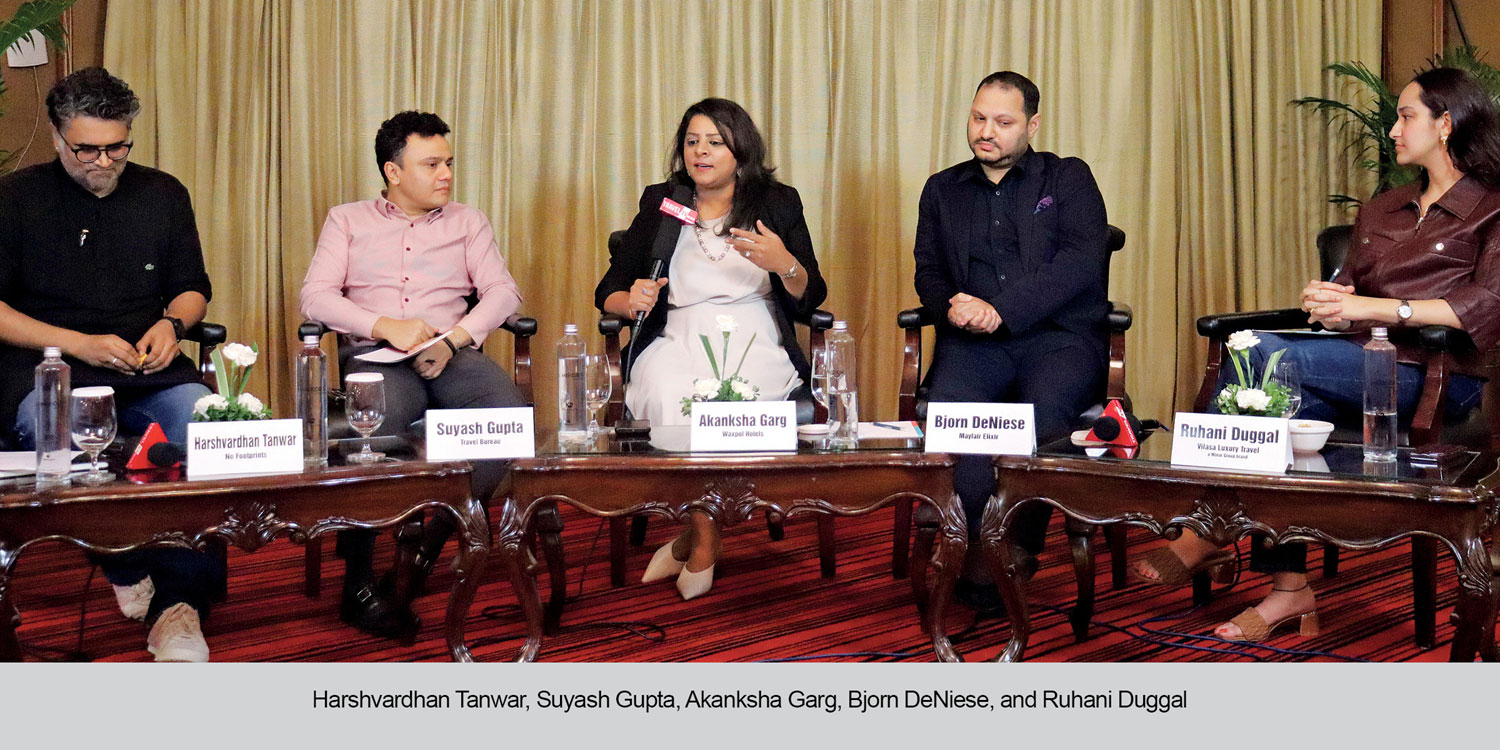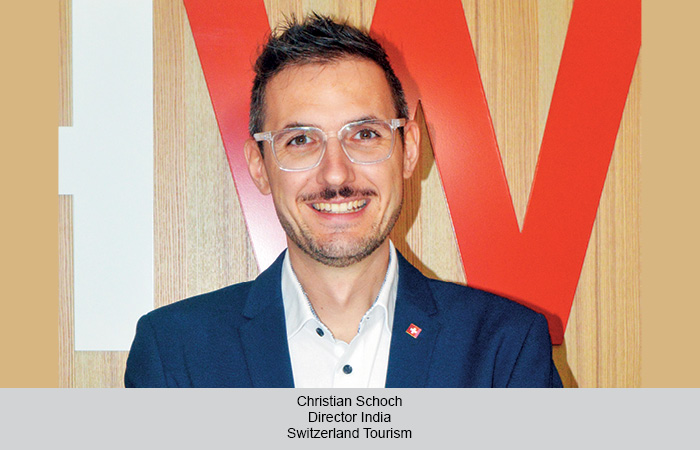The first edition of TRAVTALK ThinkTank, held at Le Méridien New Delhi, gathered young brains from India’s tourism industry to brainstorm ideas to transform India’s inbound story.
Nisha Verma
TRAVTALK ThinkTank aims to move industry conversation beyond panels into action. The inaugural session — ‘Reimagining Inbound India: Making India the Must-Do Destination for a Younger Global Traveller’ — brought together young practitioners who run DMCs, curate luxury travel, design community-led experiences, and strategise hotel brands. The idea was to identify what works, what doesn’t, and what practical steps the industry can take to entice younger visitors to India. The roundtable at Le Méridien New Delhi was designed to surface immediate, executable ideas rather than lofty manifestos. The room agreed on the core problem. About 63 per cent of India’s inbound visitors are over 45. The world’s growth is being driven by 25–40-year-olds, who buy short, high impact trips and spend on experiences. As Suyash Gupta, Director, Travel Bureau, puts it, India’s challenge splits in two – perception and product.
The perception game
Kickstarting the conversation, Gupta said, “First is the perception problem. India is considered slightly unsafe, not very organised, and people still believe that India is a country of snake charmers.” Then he pointed to demand hiding in plain sight. “Concerts, cultural festivals, wildlife, and immersive educational travel bring young travellers when we package them right. Our company has been the official travel partner for Magnetic Fields music festival, in Alsisar, Rajasthan. That has attracted many foreign tourists for years. If we want younger visitors, we need to design an ecosystem for them. We must make this a social media campaign for the larger audience to create a bigger pie for everyone,” he added.
Ruhani Duggal, Founder & Lead Curator, Vilasa Luxury Travel, underlined, “We have to understand that a country’s product offerings and perception go hand-in-hand. Marketing alone is not enough to shift perception.”
Packaging is key
She further underlined that India has depth, but it must be translated into an emotional language that resonates with a mobile, experienced, and expressive traveller cohort. Claiming that luxury is emotional precision, she used the examples of streetwear pop-ups, and beauty/Ayurveda trips to illuminate how heritage and modernity can be married to create new touchpoints for youth markets. “Today’s travellers want experiences that remember them back,” she underlined.
She added, “When it comes to Gen Z, we are seeing that now the travel designers are also younger and catering to a younger generation. This generation is looking for a DMC or a stakeholder who speaks their language. The Golden Triangle will be the same for first timers. The challenge is how to do it in Vilasa style, which is very experiential and immersive,” she said.
All about storytelling
Taking the experiential momentum forward, Harshvardhan Tanwar, Co-founder, No Footprints, said, “Narrative is critical. We call ourselves the seriously fun people.” He gave examples that clearly land with younger audiences. “We run a Queer Day Out. Not just queer friendly rooms. In Jaipur, we read the city through flowers. You go back with a story you can only get here,” he shared.
It took Akanksha Garg, Founder & Chief Executive Officer, Waxpol Hotels & Resorts, a long time to dispel misconceptions about Sundarbans. “Over time, through our own personal marketing and information, we could create a very small percentage of the market about Sundarbans. We also realised people do not want a safari every day. They want to live like a local Bengali in the Sundarbans for a day,” she said.
She was candid about social media feed too. “Instagrammable matters! And like it or not, TikTok moves markets in countries where Instagram is not even used. If we want the young, we must show up where they live,” suggested Garg.
Brand matters
Bjorn DeNiese, Managing Director, Mayfair Elixir, suggested, “We must start with getting the brand right. What brand has been created by the previous generations is probably to get people in the door, which is the Golden Triangle. However, we must promote the other experiences too. We have to create brand ambassadors for people to talk about it,” he said.
Are Indian hotel operators doing enough? He said, “There is a gap. However, it is being filled up very well. A lot of new entrepreneurs are coming up with ideas. People are doing farm stays and village stays. We are opening a wellness and wildlife brand in Almora focused on nature and self reset. Wi-Fi exists, but disconnecting is part of the value.”
Price war is real
On her part, Garg voiced her frustration loudly, saying, “Africa sells a basic room for a thousand dollars a night. India has better products in many places. What do we hear from the trade? Please reduce the rate. When I go abroad, all the operators want 5-star accommodation and rates. However, they are not willing to pay for it. We need to stop undercutting and standardise baselines — Five-star, four-star, three-star — clear rates, and clear quality of service that they would get.”
Commenting on the DMC network, Gupta said, “The Indian DMCs at some level went into a price war, which was a lost battle for everyone. Everyone is cutting prices. No one is winning. Because of this, other countries boomed.You run a business to make revenue. One can go into community building, but across the board, 90 per cent of business has shifted to outbound, because that is where the money is.”
The big struggle
For Tanwar, the biggest challenge is distribution. “Unlike larger DMCs and OTA platforms, we don’t have the distribution platform. We rely on them to showcase our experiences. We are paying 30 per cent to be on OTA because we just want to be relevant, despite it not being feasible monetarily,” he highlighted.
“We participate in international shows, and see the Indian forum is empty and still we have to pay despite being the only person trying to make a difference. I suggest that the government should just give it for free to 10–15 people who are talking for your country passionately. This industry works on passion; it doesn’t work on money.”
Skilling is his second crusade. “I think skilling is a big challenge and we honestly want to skill a lot more people so that they understand how to navigate through situations.”
Scope for data
Garg takes the data to curate products for customers by interacting with DMCs. She shared that most of the people follow what has clicked for someone else, instead of finding their own niche.
Duggal said, “One can’t look at existing demand and complain. That means abandoning the mission. I believe in creating demand instead of fighting for it and getting into predatory pricing.”
India aspirational?
Duggal underlined that the industry has not done a good job in showcasing the aspirational side of India, which exists. “We do a lot of work internationally to educate people about the luxury that India can offer.” Debunking the myth around India being considered value for money, she said, “If you come to India with a backpacker budget, you are going to get backpacker services. Value for money does not mean that we must make something cheaper. As soon as the benefit you are getting is greater than the cost, it’s added value.”
Garg summed it up, saying, “In India, luxury lies in the small things. You have someone who brings you water, another who carries your luggage — that is service, that is human luxury. And unlike many parts of Europe, our people speak English, which is a huge advantage.”
Image revamp
Garg highlighted that there is a big awareness issue. “The negatives get highlighted,” she said. Duggal agreed, “Fear and disgust get more traction online. We need an anti-thesis for that, a unified voice, because social media is so powerful.”
Echoing the sentiment, Tanwar remarked, “PR kiya toh darna kya” — highlighting that India needs stronger, unified storytelling to beat the algorithm.”
Safe destination
Garg underlined, “The only time India hits news internationally is when it comes to safety. But when there is an incident in the US or Europe, travel continues. India, however, faces advisories. The truth is, India is a safe country for women — we need to say that more often.” Gupta shared, “I don’t know anyone who has been to Rome and not had something stolen — we still go to Rome. Why not create a narrative that acknowledges the problem but shows that India is as safe as any global destination?”
Duggal revealed, “Like any other country, India has safe and unsafe areas. It’s unfair to label an entire country unsafe.”
Collaboration is key
Gupta suggested that he was ready to give a commitment for a one full day discussion with key stakeholders, where they walk out with a practical action plan.
Garg shared that, she would change how to reach out to young clients. “I will make my products more modern for Gen Z. Everybody in the industry must come together, so that we can do the one-day planning, discussion, or brainstorming, to come up with a single idea that we all can focus on — ‘How do we make India great again for the international market?”
DeNiese, commented, “We should not stop innovating. I think celebrating India and celebrating its people, culture and everything that is around you. Perhaps in your own neighbourhood, you have a great chef or a great story that could bring 10 people to India.”
Sharing that he has taken many famous people on walks, Tanwar concluded, “We have hosted Nigella Lawson, Zendaya, Tom Holland for our walks. We miss out on the opportunity that one sentence, from such people, makes a big difference. We have never had an international brand ambassador. Lots of people have visited India. That’s an opportunity to have ambassadors in every country for just promoting India, which is incredible.”
Together, the panel called for an industry-wide effort to change perceptions, led by data, visibility, and storytelling from real women travellers and entrepreneurs who live and work across India every day.
 TravTalk India Online Magazine
TravTalk India Online Magazine





